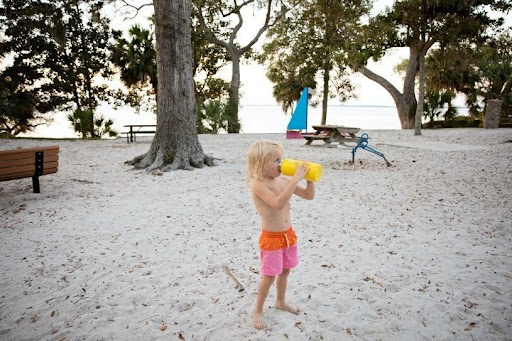To sign up for our daily email newsletter, CLICK HERE
When it comes to stand-up paddleboarding, there are several mistakes made by starters and professional paddlers. By learning them, you can be able to ensure the sport and possibly save your life.
Below are the common mistakes many people make when getting started with paddleboarding.
- Purchasing the wrong equipment
A common mistake most newbies make is buying or renting the wrong paddle board. Low-priced stand-up paddleboards might be attractive to beginners but some are not the right ones. Therefore, you need to be very careful when purchasing any stand-up paddleboarding equipment, especially if you are a starter.
- Paddleboarding without company
Most people do not know that there is safety in numbers, especially when paddleboarding. Paddling alone can be very dangerous. Therefore, make sure you bring a family member or friends along when paddleboarding. Even when you gain experience, paddling alone is not recommended.
- Going paddleboarding without checking the weather
Always check the weather before going out paddleboarding. Happily, with today’s technology, you can learn about the weather using your smartphone. There are many great paddleboarding weather apps you can use. Stand-up paddleboarding is fun and exciting when you ride in nice sunny weather. Avoid paddling in a storm as it is dangerous and not recommended.
- Working with the wrong paddle

Most beginners make the mistake of using the wrong paddle. Do not make the mistake of working with the wrong paddle. Having the right paddle allows you to have a nice, smooth, and great riding experience. Keep in mind there are paddles designed for beginners and some designed for veteran paddlers.
- Holding your paddle the wrong way
One common mistake most newbies make is holding the paddle the wrong way. Once you start paddling, the paddle should bend away from you. In most cases, the logo on the paddle should face forward. Also, if you are paddling on the right side, the left hand should be on the top, and when paddling on the left side, the right hand should be on the top.
- Failing to adjust the paddle length
Most new paddlers are not aware that a paddle should be above the head. Therefore, you need to adjust the paddle length accordingly before you start paddling. If a paddle is too short, it will stress your lower back. And if it is too long, you will have issues with your shoulders.
- Paddling when the arms are bent
It is important to keep the arms straight while paddling. Even though it is natural to keep the arms bent, especially when learning how to paddle, you cannot gain power. Therefore, you need to ensure you paddle when the arms are straight.
- Not keeping the paddle vertical
To ensure you paddle in a straight line, the paddle should be vertical. Also, it should be close to the edge of the paddleboard. When the paddle is away from the edge of the board or you are not keeping the paddle vertical, the board will start to turn.
- Paddleboarding with the tip of the blade
It is important to ensure that the paddle blade is submerged in the water fully. If you are paddling with the tip of the blade, you will not have enough power to move forward.
- Forgetting to use a leash
Avoid the mistake of not using a leash when paddleboarding. A leash will keep you safe and keep your board close to you in case you fall. The leash is one of the essential items you need to have when paddleboarding. It will also protect your paddleboard from hitting other paddlers.
- Standing far forward on the paddleboard
Another mistake starters make is standing far forward on the paddleboard. It is important to note that the further a paddler stands towards the nose of the paddleboard, the harder it becomes to control it. Also, if you stand far back on the paddleboard, you will have a hard time controlling it.
- Looking at the paddleboard while paddling
Beginners and experienced paddlers are always tempted to look at the paddleboard while paddling. This is a common mistake that can make you lose focus and balance. Always while paddleboarding, make sure you look forward. This will help you maintain focus and balance on the board.
- Training in choppy water
If you are a beginner, avoid training in choppy water. You should only learn when the water is calm and flat. Though every beginner wants to learn the basic techniques as fast as possible, do not train in uneven water. A starter cannot fight to balance on the board and at the same time learn a new technique.
- Paddleboarding with the wind
Do not go out to paddle if it is windy. Paddling in windy conditions is only for experienced paddlers. But even some skilled paddlers do not like it. In addition, paddling against the wind is very hard.
- Forgetting to carry water and snacks

Stand-up paddleboarding is an amazing workout that is full of fun. However, it can make you dehydrated. Therefore, you need to carry enough water to ensure you remain hydrated. Also, you need a healthy snack after the paddling session is over.